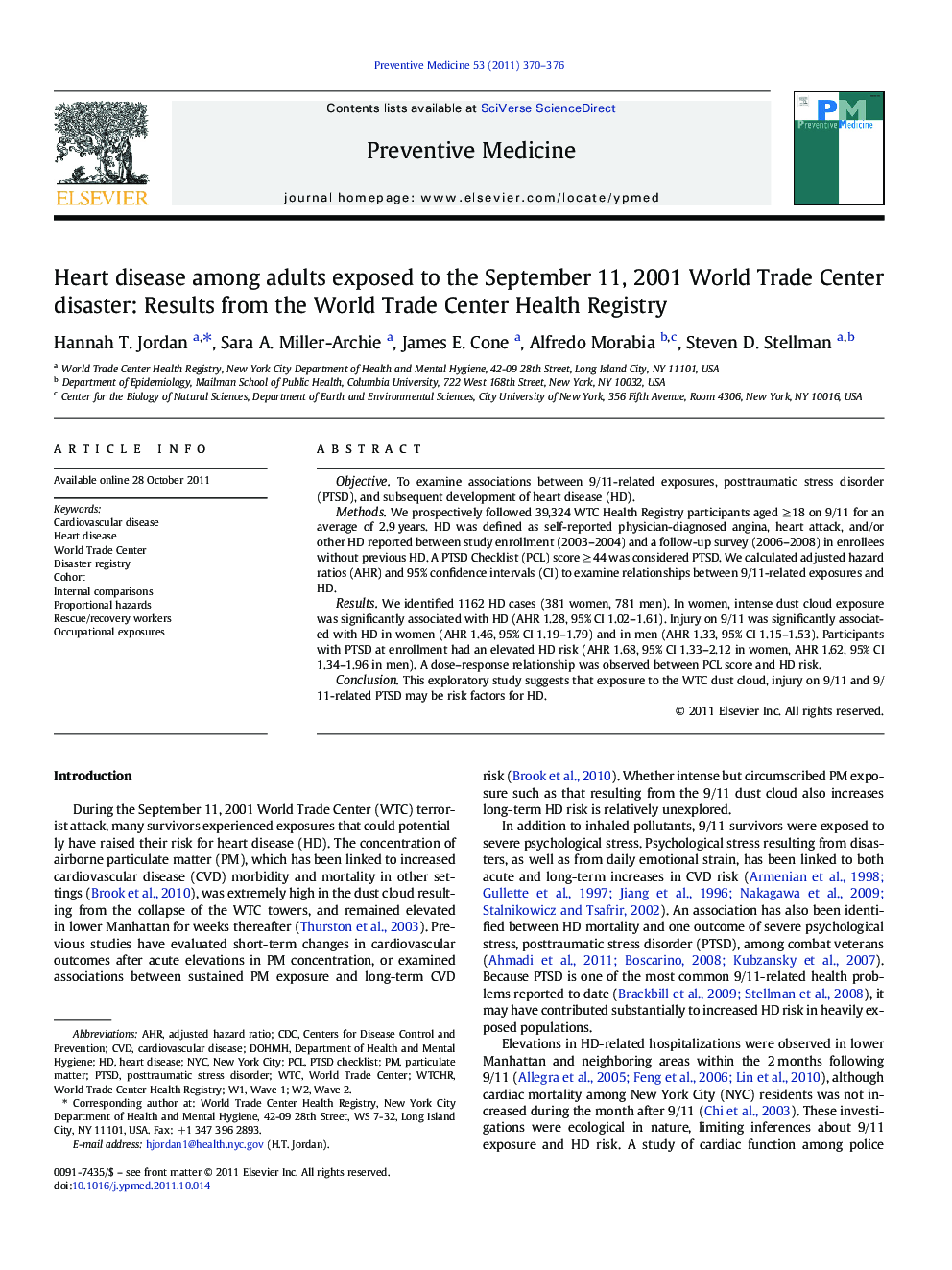| Article ID | Journal | Published Year | Pages | File Type |
|---|---|---|---|---|
| 3100852 | Preventive Medicine | 2011 | 7 Pages |
ObjectiveTo examine associations between 9/11-related exposures, posttraumatic stress disorder (PTSD), and subsequent development of heart disease (HD).MethodsWe prospectively followed 39,324 WTC Health Registry participants aged ≥ 18 on 9/11 for an average of 2.9 years. HD was defined as self-reported physician-diagnosed angina, heart attack, and/or other HD reported between study enrollment (2003–2004) and a follow-up survey (2006–2008) in enrollees without previous HD. A PTSD Checklist (PCL) score ≥ 44 was considered PTSD. We calculated adjusted hazard ratios (AHR) and 95% confidence intervals (CI) to examine relationships between 9/11-related exposures and HD.ResultsWe identified 1162 HD cases (381 women, 781 men). In women, intense dust cloud exposure was significantly associated with HD (AHR 1.28, 95% CI 1.02–1.61). Injury on 9/11 was significantly associated with HD in women (AHR 1.46, 95% CI 1.19–1.79) and in men (AHR 1.33, 95% CI 1.15–1.53). Participants with PTSD at enrollment had an elevated HD risk (AHR 1.68, 95% CI 1.33–2.12 in women, AHR 1.62, 95% CI 1.34–1.96 in men). A dose–response relationship was observed between PCL score and HD risk.ConclusionThis exploratory study suggests that exposure to the WTC dust cloud, injury on 9/11 and 9/11-related PTSD may be risk factors for HD.
► We examined non-fatal heart disease occurring 2 to 6 years after 9/11. ► PTSD and intense dust cloud exposure were risk factors for heart disease. ► The risk of heart disease rose as PTSD Checklist scores increased. ► An elevated risk of heart disease was present with subsyndromal PTSD.
